According to Bela Lugosi‘s official bio, before coming to America he had been a star on the Hungarian stage, appearing in major Shakespeare productions. However, several biographers have disputed Lugosi’s “star” ranking during that period. It seems most of his roles had actually been small ones. Regardless, Lugosi enlisted in the Hungarian army during the First World War, was wounded several times, and later had to flee Hungary during a tumultuous political climate which was unfriendly to his leftist leanings. After a stay in Germany, Lugosi arrived penniless in the States. Eventually, he made his way to the New York stage and began appearing in plays and silent films. In 1927, Lugosi was cast in the role of Dracula in Hamilton Dean’s famous stage play. With that, Lugosi became a major star of the stage, and stardom brought him numerous female fans, including Clara Bow, with whom he had a brief affair.

In 1929, director Tod Browning, shopping around for the lead of the film version of Dracula, cast Lugosi as a vampire-like inspector in The Thirteenth Chair (1929). Although Lugosi was not a great actor in the conventional sense, he did have an undeniably magnetic screen presence and brought an air of European mystery to the most rudimentary melodramas. Browning capitalized on this as few directors could and it worked, leading to Lugosi landing the career-making role of Bram Stoker’s Count in Browning’s 1931 film, Dracula. The 49 year old Lugosi was perfect for the part. His idiosyncratic mannerisms, unique mangling of the English language (which, despite rumor, he did not deliver phonetically), and otherworldly persona made for a compelling figure, a point made all the more obvious when compared to Carlos Villarias’ laughable performance in the Spanish language version of Dracula (shot at the same time on the same sets as Browning’s classic). Years later, Lugosi bitterly complained about the typecasting which resulted from the film, but realistically, Dracula was the best thing that happened to the actor. With his limited acting skills and heavy accent, Lugosi never could have been successful in the romantic matinee roles he desired.
If Lugosi had been shrewder, he would have wisely seized the niche left void by the untimely passing of Lon Chaney. Instead, the success of Dracula quickly went to his head. Lugosi was aloof and let it be known that he preferred Hungarian company to Hollywood types, making him unpopular with studio executives. Lugosi did not help matters with his prima donna complaints during screen tests for Frankenstein (1931), which certainly contributed to his being booted off the project. Frankenstein director James Whale preferred Boris Karloff and cast him in the role. With that, Lugosi’s brief few months reign as horror king was history.
Rather than starring in Frankenstein, Lugosi’s next part was a mere red herring in the Charlie Chan entry The Black Camel (1931). This film was once considered lost, but a print was recently discovered; which, understandably, failed to make entertainment tonight headlines. Lugosi curiously followed this with Broadminded (1931), a sophomoric comedy with Joe E. Brown and the doomed Thelma Todd.
Reeling from his many missteps during the Frankenstein debacle, Lugosi turned nothing down and threw himself into a number of films in 1932. Murders in the Rue Morgue (1932) was Lugosi’s next horror role, directed Robert Florey, who had been the original choice to helm Frankenstein. From the evidence of this film, we can be grateful that both Florey and Lugosi were sacked. While Florey does a decent imitation of German Expressionism, Murders still feels like imitation. Lugosi again has charisma, but not enough to carry the film, which is badly written and awkwardly directed. Lackluster box office and reviews prevented Lugosi from obtaining the contract with Universal Pictures that he desperately needed.
Lugosi free-lanced at the Fox studio to film Chandu the Magician (1932), which was based off a popular radio serial. Chandu contains one of Lugosi’s most animated performances as Roxor the magician. He bounces off the screen, spewing slime, and plays havoc with his line deliveries. Unfortunately, this William Cameron Menzies-helmed film was directed without inspiration and featured an equally uninspired lead performance by Edmund Lowe.
White Zombie (1932) is a compelling fairy tale of a film filled with static dread. It was directed by the Halperin Brothers, and, reportedly, anonymously co-directed by Lugosi. Although that rumor has never been officially confirmed, it may be more than mere rumor, since none of the Halperin Brothers’ remaining films have near the flavor of White Zombie. Lugosi’s role as Murder Legendre ranks among his very best in this, Hollywood’s first zombie film (the zombies here are a much different breed than contemporary, post-Romero zombies).
Lugosi had another red herring role in The Death Kiss (1932). Stylishly directed by Edwin L. Marin from a witty script, the film did little to help Lugosi’s career or fortune.
Island of Lost Souls (1932), directed by Erle C. Kenton, starred Charles Laughton. Despite being heavily buried under overdone make-up, Lugosi gave a brief but highly effective performance as the Sayer of the Law. This film has justifiably become a cult favorite, resulting in its upcoming Criterion Release in 2011. 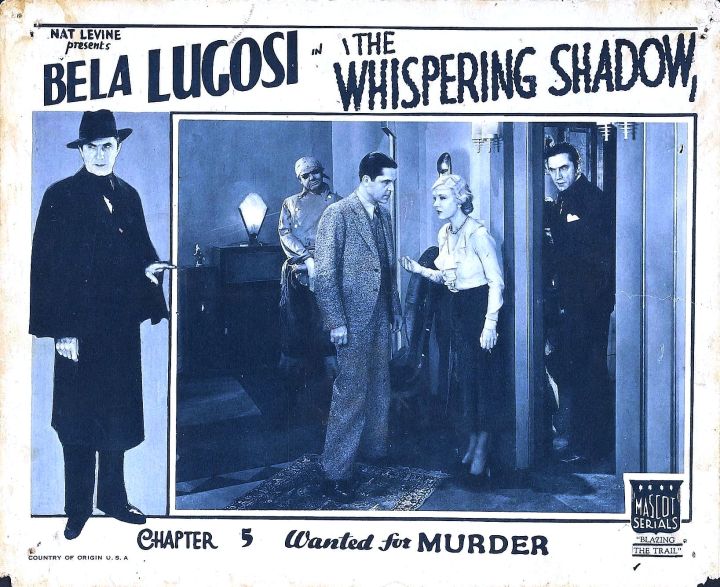 1933 found Lugosi in his first serial: The Whispering Shadow. It is an endlessly creaky chapter-play with Lugosi continuing his unwise descent down the path of playing a diversionary suspect.
1933 found Lugosi in his first serial: The Whispering Shadow. It is an endlessly creaky chapter-play with Lugosi continuing his unwise descent down the path of playing a diversionary suspect.
If the James Whale/Boris Karloff feature The Old Dark House (1932) is the best in this genre, then Night of Terror (1933) is the worst. Within two short years, Lugosi was already parodying his Dracula image in a live action Betty Boop short called “My Silent Love” (1933), featuring Bonnie Poe as Betty. Lugosi’s vampire makes a surprise appearance at the end, sensually grabbing the buxom Bonnie and leering into her cleavage, “Betty, you have Booped your last Boop.”
Next came an offbeat role in the cult favorite International House (1933). This bizarre big screen radio entertainment starred the inimitable W.C. Fields, the equally inimitable Cab Calloway (singing ‘Reefer Man’), the infamous Peggy Hopkins Joyce, George Burns, Rudy Vallee and Lugosi. Supposedly directed by A. Edward Sutherland (more likely directed by Fields himself), House delightfully defies adequate description.
In 1934 Lugosi returned to Universal for his first teaming with Karloff in Edgar G.Ulmer‘s flawed masterpiece, The Black Cat. Lugosi excelled in the role of the enigmatic protagonist, although Karloff’s performance had the slight edge. Karloff always retained affection for the film and later gave sincerely felt advice to Lugosi imitators when he suggested they watch his co-star’s delightfully eccentric delivery of the line, “I vill tear the skin from your body, ssssslowly, beet by beet.”
Lugosi also returned to serials, but this time as the lead hero in The Return of Chandu (1934). He was certainly better cast in the role than Lowe had been in the previous entry, but this “sequel” had a minuscule budget and, surprisingly, Lugosi’s charisma from the previous film was inexplicably toned down. The Mysterious Mr. Wong (1934) was the first of the poverty row Monogram Pictures films for the actor. It was the start of an inglorious body of work. Mysterious Mr. Wong is hopelessly dull, racist pulp with few redeeming qualities.
Mark Of The Vampire (1935) re-teamed Lugosi with Tod Browning, this time at MGM. An “A” budget and director contributed to Lugosi’s menacing portrayal of a pseudo vampire, all but Dracula in name. Lugosi next traveled to England to star in Hammer’s first horror film, The Mystery of the Marie Celeste (1935), for which the actor gave a heartfelt performance, although the film itself gives no indication of the studio’s later stylized excellence in the genre.
The Raven (1935) is another “A” budgeted Universal film. Under the sophomoric direction of Lew Landers, Lugosi again plays with Karloff, but this time Bela was given the considerably larger role. Lugosi was alternately intense and irritating in his role as an Edgar Allan Poe-obsessed doctor—possibly making this the quintessential summation of Lugosi as a screen actor and personality.
The Raven also poignantly illustrates why Lugosi disconnected, compared to Karloff’s ability to connect. Lugosi rarely asked for, or received, sympathy. His villains, such as The Raven‘s Dr. Richard Vollin, are elitists, seeing themselves as superior and god-like. Karloff, even as the monster of Frankenstein, is almost always inherently human and vulnerable. Unfortunately, The Raven‘s lewd melodramatics caused an intense backlash against horror films in Great Britain and Lugosi was cruelly made the scapegoat by Universal producers who refused to shoulder the blame.
Murder By Television (1935) should be, by title alone, a ripe candidate for cult status, but it’s merely a messy cure for insomnia. Universal next gave Lugosi a secondary role in the sci-fi oddity The Invisible Ray (1935). For once, Lugosi was surprisingly restrained (while Karloff uncharacteristically overloaded on ham). However, contemporary audiences may be more “frightened” by Lugosi’s racist handling of an African infant than by any “horror” elements in this too subdued film.
The temporary horror ban took its toll on Lugosi. Two back-to-back serials, Shadow of Chinatown (1936) and S.O.S. Coastguard (1937) barely kept the actor from starving. Shadow is unbearably tedious. Although Coastguard had a more tolerable budget, and Lugosi gave an animated, hammy performance, it too is a shoddy bit of entertainment.
Lugosi was off-screen throughout 1938 and the future looked increasingly bleak until a double-bill revival of Dracula and Frankenstein proved to be a shocking success, lifting the horror ban. Universal lavished the production of The Son Of Frankenstein (1939) with a strong cast and budget. Lugosi stunned critics and audiences alike with his masterful portrayal of the slow-witted, malevolent Ygor. Ygor is probably Lugosi’s best screen performance, one which director Rowland V. Lee built up for the actor, much to the studio’s chagrin. The producers at Universal knew the actor was in a state of desperation and wanted to take advantage of Lugosi’s plight, offering him a small salary for a limited time frame. Feeling sympathy for Lugosi, Lee re-wrote the actor’s role. Lugosi’s extended dialogue and screen time kept the actor on set throughout the shoot, giving Lugosi a heftier take home pay and a far more noticeable part. Along with co-star Lionel Atwill, Lugosi stole the film from Karloff and Basil Rathbone.
Ninotchka (1939) is often cited proof of Lugosi’s ability to act in a non-horror role, but his part is barely noticeable in this Greta Garbo film directed by Ernst Lubitsch.
The Phantom Creeps (1939) was Lugosi’s final, and enjoyably silliest, serial, with the actor trying to rule the world together with an aluminum foil robot.
Dark Eyes of London (1939) is an atmospheric Edgar Wallace melodrama, hampered by a noticeably low budget and intrusive comedy relief, but the film received generally good notices and resulted in a contractual offer for a series of films to be shot in England. Foolishly, Lugosi turned down the offer, preferring instead to return to a Hollywood which didn’t really want him. Lugosi’s first decade as a “horror star” was his best, although with decidedly mixed results.
Lugosi did some modeling for the part of Satan in the Mussorgsky segment of Walt Disney’s Fantasia (1940), but whether or not the actor’s features were actually used has been debated.
Lugosi proved to be an exciting foil for George Sanders’ witty hero in The Saint’s Double Trouble (1940), but Universal ludicrously cast Lugosi against type as a gangster trying to kill Karloff in Black Friday (1940). The Devil Bat (1940) is an engagingly idiotic PRC film with Lugosi hamming it up as the mad doctor archetype, creating killer bats out of shaving lotion (!) You’ll Find Out (1940) unforgivably wasted the one-time teaming of Lugosi, Karloff and Peter Lorre by making them secondary to bandleader Kay Kyser!
The Invisible Ghost (1941) may be the best of Lugosi’s Monogram films, which is saying absolutely nothing, even if director Joseph H. Lewis tried desperately to inject a sense of style into the penny dreadful tale. Lugosi was back playing yet another red herring role as a whiskered gardener in the alleged comedy The Black Cat (1941). 1941 red-herring number two has Lugosi as a magician slumming with the Bowery Boys in Spooks Run Wild (1941). Lugosi was far better cast in the small but colorful character role of Bela, the Fortune Teller in The Wolf Man (1941).
1942 found Lugosi in a foursome of awful Monogram films. He was a Nazi in Black Dragons, a bride-snatcher in The Corpse Vanishes, and keeper of zombies (sort of) in Bowery At Midnight (1942).
Although Lugosi was back as Ygor in Universal’s The Ghost of Frankenstein (1942), the film had a gravely reduced budget and an inferior actor (Lon Chaney, Jr.) as the monster, which affected Lugosi’s fatigued performance. And yet again, Lugosi the butler didn’t do it in Universal’s Night Monster (1942).
Despite popular belief, the Ed Wood films are not the nadir of Lugosi’s screen career. That honor may go to Monogram’s Ape Man (1943). Injected with ape serum, Lugosi hangs out in a corner cage with a guy in a gorilla suit. He also sports a glued-on beard and scratches his armpit. It’s an excruciating, cringe-inducing sixty minutes.
Almost as humiliating is Lugosi’s belated turn as the Frankenstein Monster in Frankenstein Meets The Wolfman (1943). Thirteen years after being fired from the part, Lugosi, now past sixty, was far too old for a role he was never right for to begin with. The actor’s performance, which was already doomed, was made unbelievably worse by moronic studio tampering with the script by hack writer Curt Siodmak. At the end of the previous Ghost of Frankenstein, the monster was supposed to have Ygor’s voice, since the shepherd’s brain had been transplanted into the monster—incidentally causing blindness. Frankenstein Meets the Wolfman was indeed filmed this way, but subsequently sabotaged by editors who nonsensically omitted any explanation for the monster’s lack of sight. Lugosi’s dialogue was also excised and in several scenes the monster can be seen mouthing muted words. Reviewers noticed and panned the film. Again, incredulously, Bela was blamed.
Lugosi returned to the vampire’s cloak in Columbia’s Return of the Vampire (1944). While once again Lugosi gave an air of dignity to his undead count, he was unfortunately saddled with a whiny, talking werewolf (!)
Monogram’s Return of the Ape Man (1944) is only slightly better than its predecessor. 
This was quickly followed with the (thankfully) final Monogram film, Voodoo Man (1944), but RKO’s Zombies on Broadway (1945) proved that Monogram hardly had the corner on bad filmmaking.

 By this time, Lugosi was quite ill, suffering from his addiction to morphine. He became addicted years before after a doctor subscribed the medicine to him for a back injury caused during a film shoot. In addition to an expensive drug habit, Lugosi badly managed his money, lavishing his earnings on expensive parties and gatherings with fellow musicians and friends (by most accounts Lugosi was an accomplished musician who performed Hungarian folk music).
By this time, Lugosi was quite ill, suffering from his addiction to morphine. He became addicted years before after a doctor subscribed the medicine to him for a back injury caused during a film shoot. In addition to an expensive drug habit, Lugosi badly managed his money, lavishing his earnings on expensive parties and gatherings with fellow musicians and friends (by most accounts Lugosi was an accomplished musician who performed Hungarian folk music).
 Despite, age, bad health, and a dour financial situation, Lugosi gave a beautifully poignant performance as the dim-witted Joseph in Robert Wise’s The Body Snatcher (1945). Lugosi proved he could indeed act, when he was actually being directed. However, the former Dracula received little notice from critics, who instead fawned solely over Karloff’s star performance.
Despite, age, bad health, and a dour financial situation, Lugosi gave a beautifully poignant performance as the dim-witted Joseph in Robert Wise’s The Body Snatcher (1945). Lugosi proved he could indeed act, when he was actually being directed. However, the former Dracula received little notice from critics, who instead fawned solely over Karloff’s star performance.
Scared To Death (1947) is Lugosi’s only color film, and the sole novelty of this immensely embarrassing film is in its discovery that Count Dracula had blue eyes.
Abbott & Costello Meet Frankenstein (1948) returned Lugosi to his Dracula role for the second and last time. Commentators have stated Lugosi played the role straight, but that is not quite the case. He plays the part very differently than he did 18 years earlier for Browning. Lugosi hides his face under his cape and “spooks” the boys. In several scenes, Lugosi’s gravelly voice almost sounds like Ygor. While Lugosi’s Dracula here lacks the inert peril that he projected in the 1931 film, Lugosi has fun with the role. It’s contagious, and we have fun watching him in his real last hurrah.
In 1949 Lugosi gave a good, but unnoticed performance in “The Cask of Amontillado” segment of the television series Suspense (which recently became available on DVD).

 The actor then was unemployed and off-screen for three long years, until he had an offer of rescue from a producer after his London Dracula tour ended with Lugosi out of money and stranded. Unfortunately, the resulting movie, Mother Riley Meets The Vampire (1952) vies with The Ape Man as Lugosi’s most unbearably agonizing film, despite the fact that Lugosi is surprisingly as animated here as he was in his villainous roles of the 1930s.
The actor then was unemployed and off-screen for three long years, until he had an offer of rescue from a producer after his London Dracula tour ended with Lugosi out of money and stranded. Unfortunately, the resulting movie, Mother Riley Meets The Vampire (1952) vies with The Ape Man as Lugosi’s most unbearably agonizing film, despite the fact that Lugosi is surprisingly as animated here as he was in his villainous roles of the 1930s.
In sharp contrast, Lugosi never looked more tired than he did in the same year’s Bela Lugosi Meets A Brooklyn Gorilla. Lugosi is humiliated here, teamed up with a wretched, poverty-row imitation Martin and Lewis.

Better (!) is Ed Wood’s Glen Or Glenda? (1953). Bela Lugosi, Jr. and others have stated that Ed Wood took advantage of Lugosi when the star was ill and vulnerable, but it is largely because of Wood’s films that Lugosi’s cult status has escalated over the last fifty years. To lean on an overused phrase, Wood’s films are indeed “so bad, they’re good.” Wood’s brand of energetic lunacy was brief, but it shone in the films he did with Lugosi. The Wood/Lugosi trilogy is a vast improvement over the bulk of the actor’s “so bad, they’re bad” films. Wood had a film nerd’s love for the faded star and it showed, mixing perfectly with Wood’s naively surreal aesthetic. Glen or Glenda is the most bizarre and, consequently, the most inspired of the trilogy.
Bride of the Monster (1955) is a somewhat lesser work, although it is the only film of the trilogy to give Lugosi a starring role. Most of Bride is standard fifties horror. Lugosi looks terrifyingly emaciated, but his strangely endearing monologue and the beautifully cheesy sets elevate this film above low budget genre films of the era and brand it with Woodian weirdness.
Lugosi’s highly publicized check-in to a drug rehab lead to his being cast in the Black Sleep (1956). It was Lugosi’s last finished film, featuring an all-star horror cast, but Lugosi was too ill to even speak and he was given the role of a mute butler. Despite the cast, the film could easily fit in the infamous Monogram oeuvre.
Laid end to end, Lugosi only has a couple of minutes of new film-footage left before his long-awaited death in 1956. Lugosi was so destitute at the end that Frank Sinatra anonymously paid for his hospital treatment bills. It has been inaccurately reported that Lugosi himself specified that he be buried in his Dracula cape. It was actually the idea of his ex-wife and son. Also legendary is the tale that Vincent Price and Peter Lorre showed up at the funeral. According to the legend, Lorre, upon seeing Lugosi in the coffin, said, “come Now Bela, quit putting us on” to which Price retorted, “should we stake him just in case?” Lugosi’s end was an ignoble finale to a career, and life ,filled with extreme highs and extreme pathos.
Wood built his Plan 9 From Outer Space (1959) around the brief unused footage of Lugosi as a posthumous valentine to Bela. Plan 9 is now the stuff of legend. The making of the film is well documented in Rudolph Grey’s book, “Nightmare of Ecstasy: The Life and Art of Ed Wood, Jr.” Lugosi’s Monogram pictures could have been directed by any anonymous hack. There is no doubt that Ed Wood was a hack, but he was not anonymous. His original personality touched every project he worked on. The same thing could be said be said for Bela Lugosi. While one often sensed that Karloff thought himself above the lesser material he appeared in, Lugosi was never guilty of mantling a condescending attitude. This makes Lugosi’s collaborative body of work with Ed Wood second only to Lugosi’s earlier collaborations with Tod Browning.
It is natural to root for the underdog, and Lugosi’s cult following has done just that. Whether Lugosi’s work actually deserves that status is debatable, but Lugosi remains one of the genre’s greatest gods. Bela need not worry one bit about being usurped by the current trend of pimply bloodsuckers. He will unquestionably remain the ideal of Bram Stoker’s vampire count for many years to come.












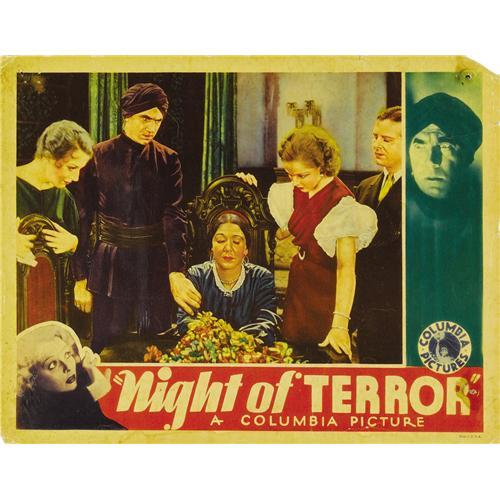










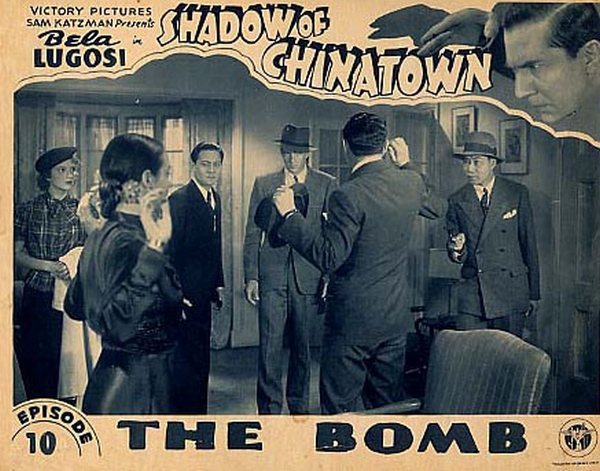





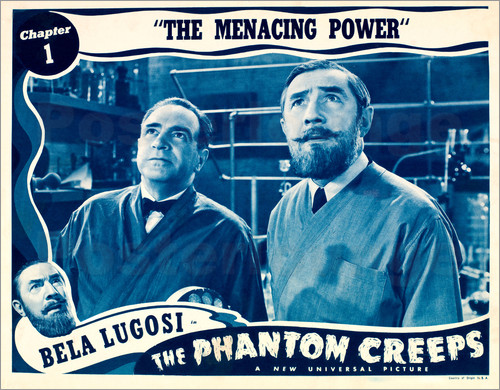







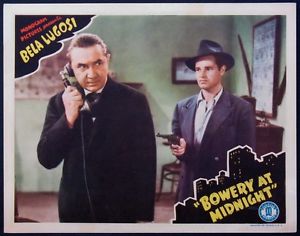

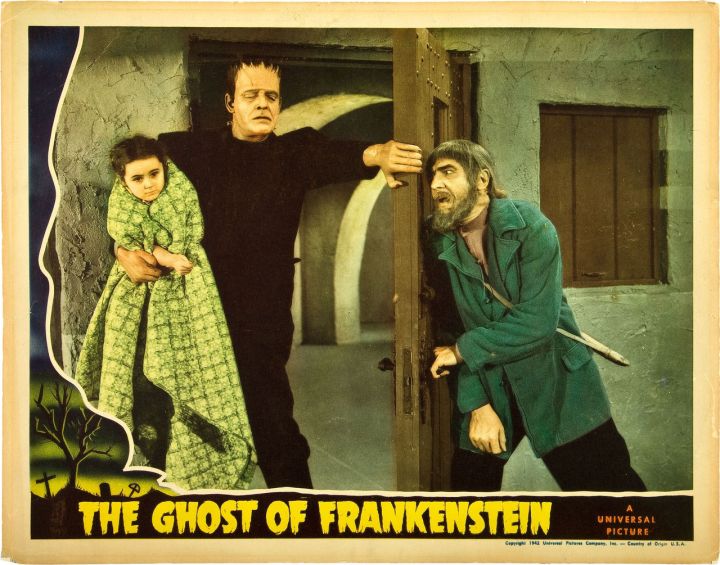












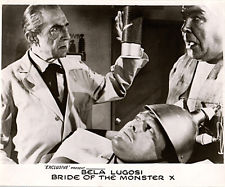

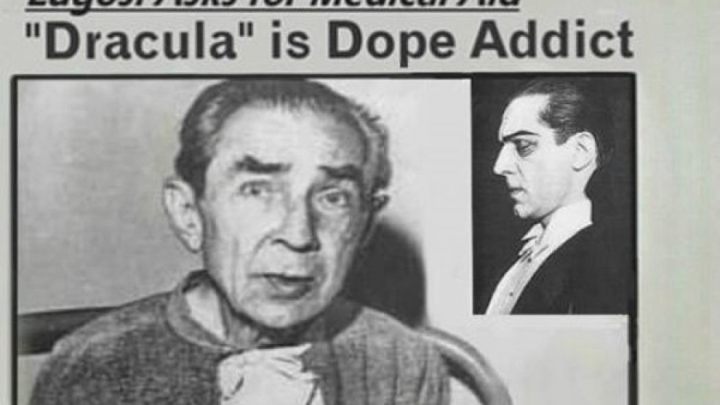




Growing up in the 30’s and 40’s and being a movie buff Lugosi and Karloff and later Price made a great impression on me.I guess I loved to be scared (by a movie) and still do at age 86.
No problem. You write one of my favorite blogs.
Thanks Cryptic
Reblogged this on Cryptic Town and commented:
Absolutely love this.